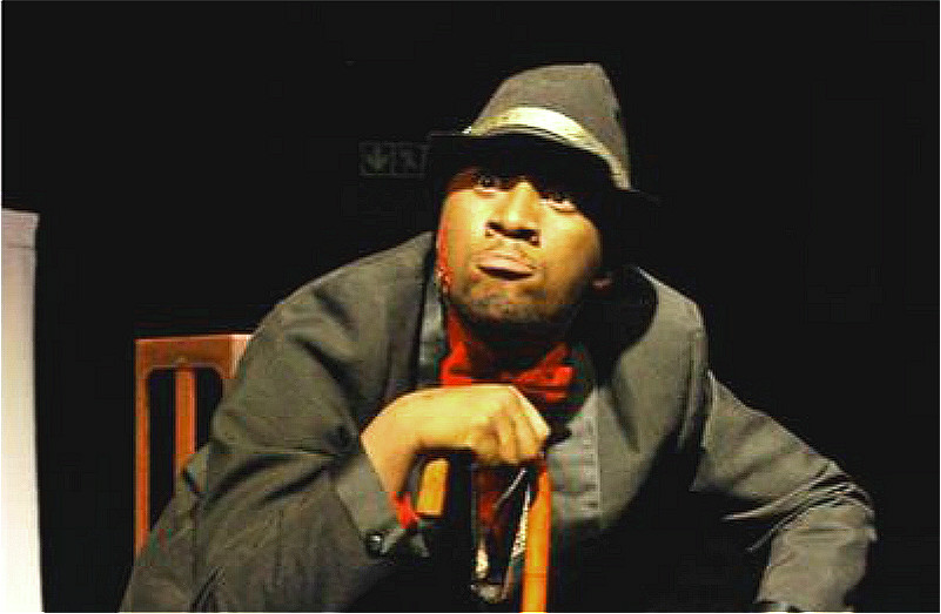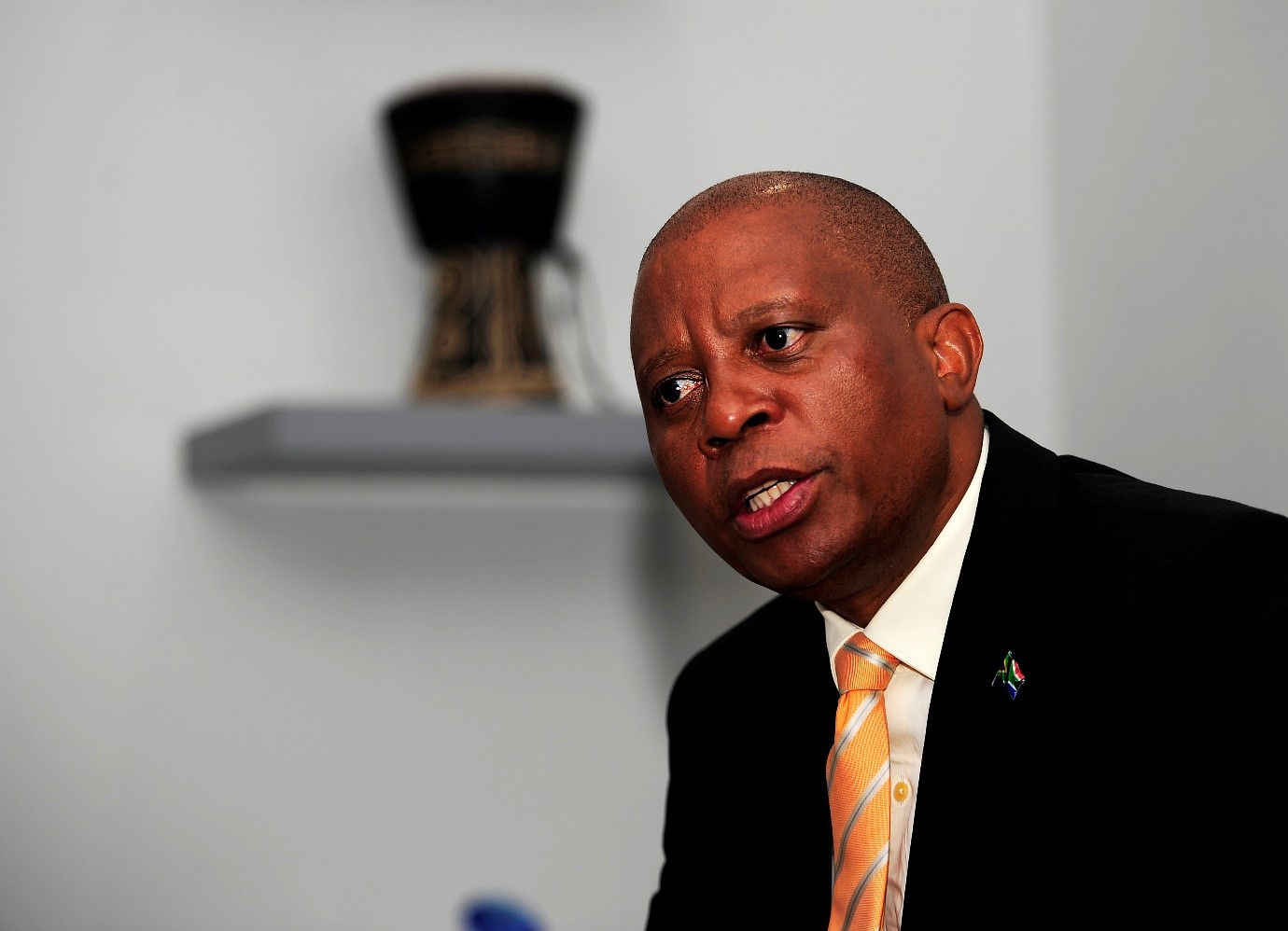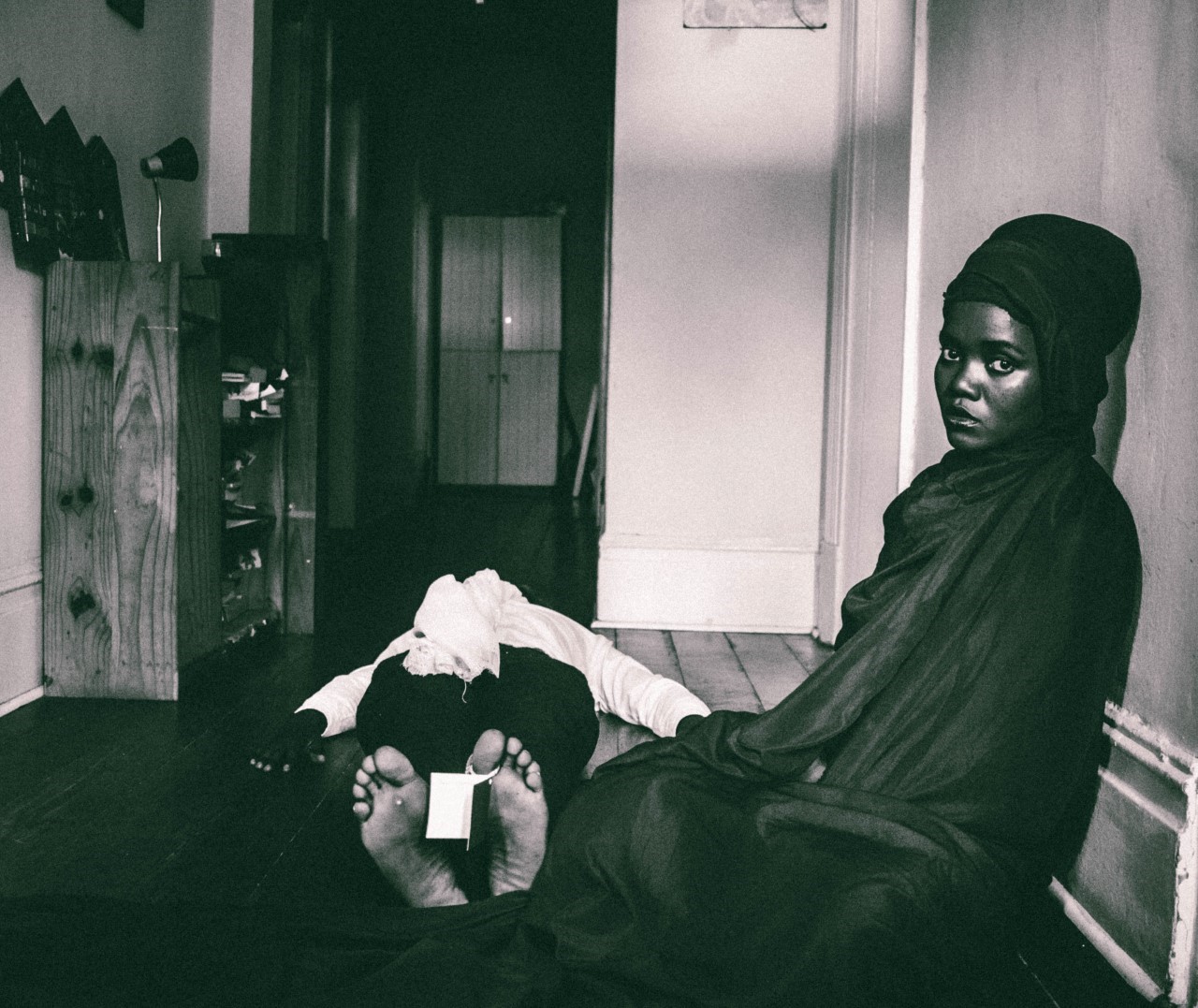“What is the identity of an evolving man?” – Red Peter
Kafka’s Ape is a thought-provoking one-man monologoue performance delivered by the talented and agile Tony Miyambo. It is directed by the intricate eye of Phala Ookeditse Phala, who renders a nuanced adaptation of Franz Kafka’s short story A Report to an Academy. This review is a deep dive into the production and how Phala and Miyambo present the universal subject matter that Kafka deals with in his short story, specifically focusing on the ideas of discomfort and authority.
Inevitably, there will be spoilers – because I need to make use of specific moments from the play to support my arguments that Mzansi’s academy was not ready for this chat in 2015, when the play was first staged. So, if you have not yet watched the show, follow the link provided below.
In this adaptation, Red Peter, a famous ape that has turned into a human being through brutal force by humans, is now learning to adapt to being a human. He is delivering a report about his evolution to an academy, and his speech centres around this question of what it means for a man to evolve from his natural self – which he must suppress in the society he is living in, into this human that he does not feel comfortable being.
The reason this adaptation is very interesting to me is because, when I worked with Miyambo on his presentation at the Market Lab Think Tank in 2021, months after he had just staged this performance, he spoke about how this work did not find immediate acceptance in South Africa when they first started performing it in 2015. The audience in South Africa was not yet receptive to this story at that time. It is only when it started garnering international acclaim that the TX Theatre in Thembisa, Miyambo’s home kasi, would stage the production to a full house.
The key questions that Red Peter battles with in a resonant way for me are; Discomfort and Authority.
Red Peter begins his report with a salutation: “Esteemed ladies and gentlemen of the academy,” takes off his hat and throws it on the floor – a clear depiction of this contradicted ape-man from the beginning of his speech. He continues to give an account about how he became human and that, even though he has no memory of his life as an ape, he knows it has been five years since he changed into a human. In his account, he speaks to this idea of how everyone has this urge to remember who they are – to reconnect themselves to a part of themselves that they feel they have lost – much like he does about being an ape. One can already start hearing how Red Peter is alluding to this discomfort that he feels at not being able to access a part of himself since he changed. And perhaps another layer to this question of the identity of an evolving man… is how to identify this in-between being that he is, who is neither man nor ape.
In this experimental performance at the Centre for the Less Good Idea in 2021, Johannesburg, Red Peter demonstrates the first thing he learnt when he became human. He learnt how to sanitize and put on a mask, as well as to do the elbow handshake. This goes back to how Phala and Miyambo constantly find ways to contextualize the story into the time and place where it is being staged. Instead of the Red Peter that is shipped to Europe in Kafka’s rendition of the story, Phala and Miyambo present to us a Red Peter who comes from Ngombe, Tanzania, who is shipped to the Eastern Cape, and is now residing in Johannesburg, Gauteng. It is easy for us to begin associating this character to the people around us and throughout history, who have travelled similar journeys and, like Red Peter, have been hunted, scarred and captured. Red Peter goes further in unpacking his discomfort by highlighting how the cage he was captured in made it inevitable for him to change into a human. The experience was so immensely painful, that it broke his soul. This is when he exclaims, in a way that can evoke feelings of loss to anyone witnessing the moment – “I can no longer attain the old truth of an ape”.

When he loses access to this part of himself, Red Peter comes to a realisation which most of us who are disillusioned about our condition in this oppressive system may also come across – that freedom is a fairytale we tell ourselves. That it is full of hopeless expectations, but finding a way out of that system is the only way that will free us from being the hunter’s prey every day without being disappointed by our external reality. Red Peter continues to complicate this thought in the simplest of ways, as he reflects on how, even when his external reality was difficult, the only way he managed to survive the discomfort was by finding an inner sense of calm. Suddenly, time slowed down, and he became very observant of his surroundings. The first thing he noticed was that the men at the top (of the ship he was captured and caged in) were disgusting, greedy people who he says did not care where they spat – and tickled him where they knew he liked it. I couldn’t help but ask myself who could those kind of men be in our society, in present-day South Africa? The men at the top who eat until their bellies pop and do not care where they leave their mess lying around, or whose life that affects. The kind of men who know where your weakness is, and use it against you, to feel like they have power over you?
It is at this point that Red Peter decides to drink a bottle of whiskey and act like a human once and for all. “Imitating human beings was not something which pleased me. I did it because I was looking for a way out.” As he had previously mentioned, the cage broke his soul. Therefore, he would do anything to survive. And in his mind, his only way to survive was to find a way out. He found it by performing in the zoo, but he goes on to say something that stuck with me. Loosely put, he says he knew that the zoo was a cage in its own way which, if you allowed it to capture you or seduce you in anyway – would leave you lost. When you dive deep into the text of Franz Kafka in this adaptation, it is quite thrilling how loaded each moment of the story is. I say this because the zoo, in my interpretation, refers to mainstream culture and becoming rich and famous. But what does Red Peter mean when he says this is a cage in its own way? How many examples do we have, of people who lose themselves in the money and fame every day?
Red Peter then goes on to state that he was able to break out of this cage by getting himself an education. That was how he found a way out, and is able to find himself giving this report at this academy. He states that his main mission now, is to “expand knowledge” … That is the quest he is on, and this is simply a report from that quest.
Watching this play is an experience during which both the performer and the audience find themselves negotiating with each other at every point of the story. The fourth wall is broken from the onset of the play; in order to establish that this is a shared experience between the two parties. As Phala also mentions in the Conversation after the performance, the play is written and performed in the form of inganekwane or intsomi, which is African oral storytelling. This is evident in the allegorical character of the ape man, as well as the important and active role of the audience. This is also a helpful approach because the negotiation between the audience and the performer stems from the discomfort of this Black man – who is Othered by white, westernized, Eurocentric ideas which have depicted Black men as apes and treated them in inhumane ways throughout history because of this stereotype. Therefore, what does it mean for this person who represents that group of people, to play such a character in present day South Africa? This question is posed to both the audience and the performer, throughout the performance. And in the conversation, Miyambo mentions that he finds different kinds of connections with the ape in different contexts, in front of different kinds of audiences. But the essence of the performance is this discomfort of being a man in an ape’s body, even though he is fully aware that he is not an ape. Instead of playing against that feeling of alienation, he plays into it, and that is what makes the performance powerful.
Lastly, another question that Kafka in his writing and Phala and Miyambo in their adaptation grapple with in a fascinating way, is that of authority figures. Kentridge mentions in the Conversation that Kafka was a Hungarian-Austrian Jew who had a difficult relationship with his father – at a time in Europe when they were being forced to assimilate into Imperialist society – and the things that Kafka avoided saying to his father at the time are evident in the way that he writes and the metaphors that he uses, like the character of an ape man. Phala and Miyambo also mention how they witnessed their own fathers fight against the apartheid regime; Phala’s father was a guerrilla in the Mkhonto Wesizwe underground movement but to Phala, he is a distant memory and vague figure in his childhood. For Miyambo, he witnessed his father struggle to support his family during a time when the Black man was made to act like a monkey in the streets of South Africa. This allegorical approach is also a way of deconstructing western conventions of storytelling and presenting characters because, as previously mentioned, African storytelling makes use of this method when telling the stories of those who find themselves stuck in the margins of society, trying to escape without being noticed by the Authority. This subversion of Eurocentric conventions is an ancient tool that storytellers in Africa and the diaspora use to challenge the powers that be, using a decolonial approach in order to not perpetuate the same exclusion and marginalisation of the same people it is advocating for. Not only that, it also deepens the resonance that audiences feel towards the story, because of how Miyambo and Phala find different ways of bringing it home.
In conclusion, this deep dive proves that the dialogue this production is having with its audience is quite forward thinking, and I suppose in 2015, a year when the first Fees Must Fall Uprising started and all universities in South Africa were shut down by students who were demanding free quality decolonized education from corrupt political figures and historically white colonial institutions – the academy and the country must not have been comfortable with such a raw reflection and introspective depiction of the state our country was in. However, since then, it has gone on to win multiple awards, being both internationally and nationally acclaimed.




















